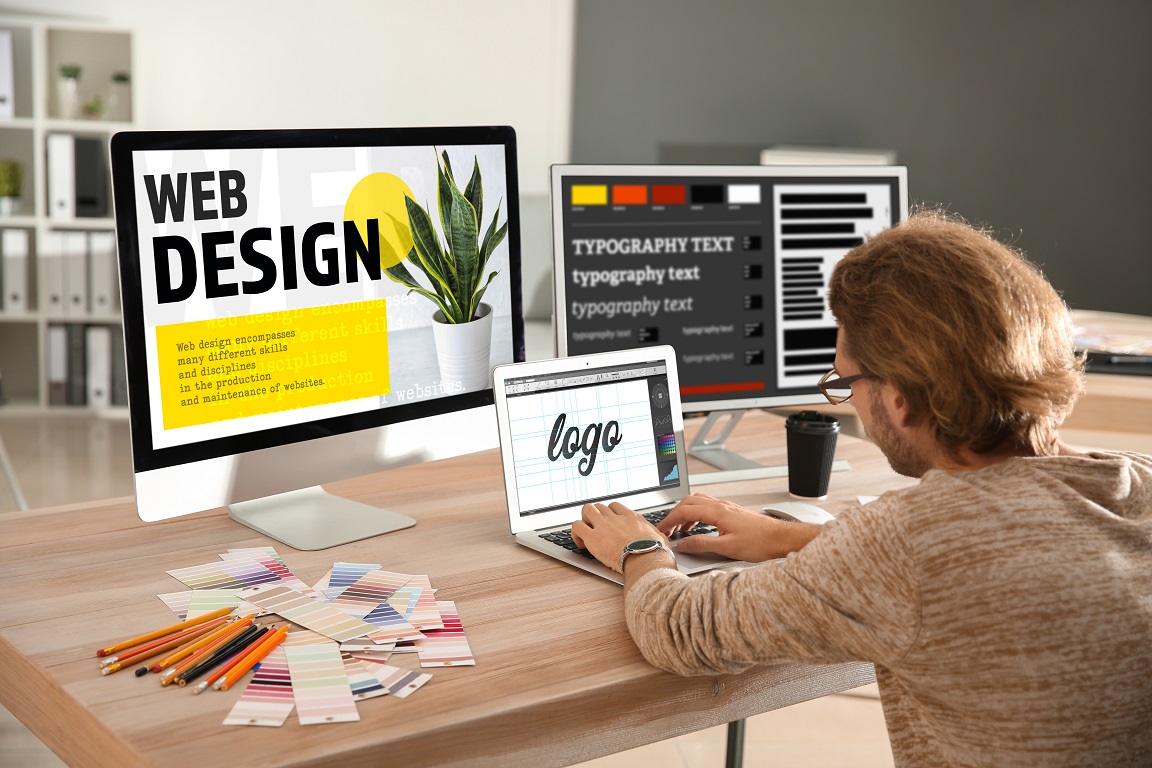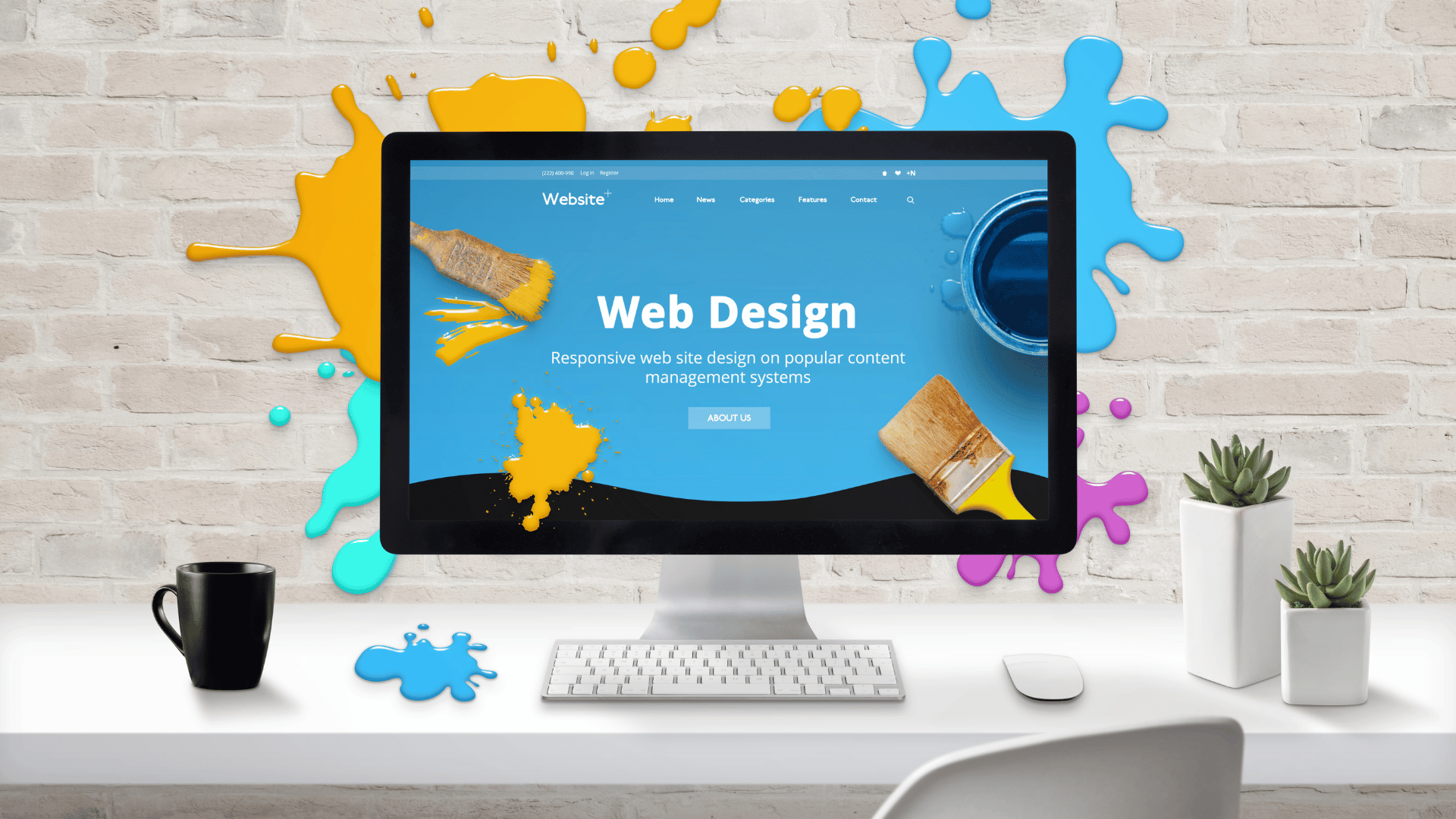Discovering Imaginative Fads in Web Design for Modern Businesses
The landscape of web design is consistently advancing, showing the vibrant demands of modern businesses. Recent patterns highlight a choice for minimalism, bold typography, and engaging interactivity. Companies increasingly focus on user experience via mobile-first principles and personalized material. Additionally, an emphasis on sustainability is getting traction. Comprehending these patterns is vital for companies aiming to stand apart in a jampacked industry. What implications do these changes hold for the future of digital interaction?
Welcoming Strong Typography
Strong typography has arised as a specifying component in modern web design, catching interest and sharing messages with striking clarity. This fad focuses on aesthetically impactful text that boosts user interaction and brand name identification. Developers usually use special typefaces and extra-large font styles to develop a pecking order, leading audiences through web content effortlessly.
The critical use of bold typography permits for reliable storytelling, enabling brand names to connect their values succinctly. It offers not just aesthetic functions however likewise functional ones, as it boosts readability throughout tools and screen sizes.
As sites complete for user focus, vibrant typography attracts attention in a saturated electronic landscape. Its adaptability enables designers to explore contrasting colors and layouts, further magnifying its effectiveness. Ultimately, accepting strong typography represents a change in the direction of more meaningful and communicative web design, cultivating a much deeper link between brands and their audiences.
The Surge of Minimalist Style
As electronic settings end up being progressively messy, the increase of minimalist design supplies a rejuvenating alternative that prioritizes simpleness and performance. This design philosophy strips away unneeded elements, enabling material to take spotlight. By concentrating on clean lines, adequate white room, and a restricted color combination, minimalist style improves user experience and enhances navigation.
Services embracing this trend objective to share their brand name message plainly and properly, cultivating a feeling of calm and quality. The lack of distractions helps users concentrate on important info, causing enhanced interaction and conversion rates. Additionally, minimal style lines up well with mobile-first approaches, guaranteeing that internet sites stay accessible and user-friendly across various devices.
Eventually, the rise of minimal design mirrors a more comprehensive change in the direction of prioritizing user needs and choices, making it an effective device for modern-day organizations looking to make a long lasting effect in the digital landscape.
Immersive Animations and Interactivity
While lots of internet developers embrace minimal aesthetic appeals, an additional engaging trend acquiring traction is the usage of immersive animations and interactivity. This strategy improves user engagement by producing interesting experiences that attract site visitors right into the content. Designers utilize vibrant components such as computer animated histories, scrolling impacts, and interactive infographics to communicate intricate concepts in an easily accessible way.
These computer animations not just give aesthetic passion yet additionally overview individuals via the navigating process, making interactions much more user-friendly. Float impacts and computer animated shifts can urge individuals to explore additionally, leading to increased time invested on the site.
In addition, this trend straightens with the wider motion in the direction of narration in web design, where computer animations function as narrative devices that share brand name messages effectively. By incorporating immersive animations and interactivity, services can distinguish themselves in a crowded online landscape, eventually improving user complete satisfaction and brand name commitment.
Mobile-First Layout Principles
Mobile-first style concepts highlight focusing on user experience by ensuring internet sites function perfectly on smaller sized displays. This technique integrates responsive design strategies that adjust to various tool dimensions while preserving aesthetic stability. In addition, it focuses on touchscreen navigation layout, enhancing use for mobile users.
Prioritizing User Experience
Exactly how can designers successfully focus on user experience in a progressively mobile-centric world? Highlighting mobile-first layout concepts is essential, as users mainly involve with web sites with smart phones. This strategy encourages developers to simplify content, guaranteeing it is easily accessible and navigable on smaller displays. Secret practices consist of simplifying navigating, lessening load times, and utilizing touch-friendly components that enhance interactivity. In addition, focusing on legible typography and intuitive designs can greatly boost user contentment. Designers must constantly collect user comments to refine their techniques, adjusting to evolving user needs and preferences. By concentrating on these components, companies can produce an appealing digital experience that promotes commitment and drives conversions, ultimately aligning with the assumptions of today's mobile users.
Receptive Layout Techniques
Developers embrace receptive format strategies to produce adaptable and flexible web experiences that deal with numerous screen dimensions. This technique prioritizes mobile-first layout principles, ensuring peak capability on smaller devices before scaling up for bigger screens. By making use of fluid grids, versatile photos, and media queries, developers can keep a natural visual identification across all systems. This strategy not only boosts user engagement yet likewise enhances internet search engine rankings, as mobile-friendly websites are preferred by search formulas. Additionally, receptive layouts allow companies to reach a wider audience, suiting individuals on desktop computers, tablets, and smartphones alike. In general, executing these techniques is crucial for modern web design, ensuring that services stay competitive in an ever-evolving electronic landscape.
Touchscreen Navigating Style
With the rise of smart phones, touchscreen navigating has ended up being a fundamental aspect of web design. Designers are significantly taking on mobile-first principles to improve user experience and involvement. Website Design Agency. Effective touchscreen navigating prioritizes larger buttons and user-friendly gestures, enabling users to engage quickly with content. This technique lowers frustration and encourages exploration, as customers can navigate seamlessly with their fingers. Additionally, incorporating swipe motions and faucet functionality deals with the natural habits of mobile individuals. Responses mechanisms, such as visual hints and animations, enhance use even more by confirming activities. As touchscreens control user interactions, using these layout elements not just lines up with modern-day expectations yet additionally promotes a more obtainable and enjoyable browsing experience for all customers
Personalized User Experiences
What makes a user really feel truly involved on an internet site? The answer usually exists in personalized user experiences. By customizing content and navigating to individual choices, services can create a significant link with their target more information market. This personalization can be attained through different approaches, such as assessing user actions, making use of cookies, and providing customized suggestions based upon previous interactions.
Ecommerce systems that suggest products based on searching background not only improve user experience but likewise increase conversion rates. Incorporating dynamic content that adapts to the user's area or time of day can even more enrich engagement.
Additionally, tailored introductions or messages can make customers feel valued and understood. As modern-day businesses seek to attract attention in a competitive digital landscape, embracing customized user experiences ends up being vital, cultivating loyalty and motivating repeat brows through. Eventually, this method changes a conventional internet site into an interactive system that reverberates with its audience.
Sustainability in Web Design
As the electronic landscape continues to progress, the relevance of sustainability in web design has acquired substantial focus. Designers are significantly familiar with the ecological influence their productions can have, prompting a change in the direction of eco-friendly techniques (Website Design Agency). Sustainable web design concentrates on optimizing websites to minimize power intake and carbon footprints. Methods consist of using minimalistic design principles, maximizing photos, and using effective coding methods to boost loading rates
The selection of hosting service providers plays a crucial duty; numerous developers are currently opting for eco-friendly hosting services powered by eco-friendly energy. By prioritizing accessibility and easy to use navigation, lasting styles likewise deal with a more comprehensive audience, enhancing functionality. This mindful approach not only charms to environmentally-minded consumers however additionally adds to the total durability and effectiveness of web sites. Inevitably, sustainability in web design reflects an expanding fad towards accountable digital methods that straighten with modern organization worths.

Regularly Asked Questions
Just How Can I Select the Right Color Design for My Site?
To select the best color pattern for a website, one need to consider the brand name's identification, target market, and emotional impact. Using shade concept and screening mixes can enhance user experience and visual charm significantly.
What Are the most effective Tools for Prototyping Website Design?
The very best tools for prototyping website design consist of Figma, Lay out, Adobe XD, and InVision. These platforms provide user-friendly user interfaces, partnership functions, and substantial collections, making them ideal for developers to produce and fine-tune their principles effectively.
How Do I Measure the Effectiveness of My Web Design?
To determine web design efficiency, one must analyze user involvement metrics, conversion rates, and usability feedback (agency for web design). A/B testing and heatmaps can also provide insights right into user actions, directing essential modifications for enhanced performance and user experience
What Are Usual Web Design Blunders to Stay Clear Of?
Common web design mistakes consist of cluttered formats, poor navigating, sluggish filling times, lack of mobile optimization, poor comparison, and ignoring user feedback. Avoiding these mistakes boosts user experience and enhances overall effectiveness of the website.
Exactly how Frequently Should I Update My Web Site Design?
A web site style need to be upgraded every a couple of years, or earlier if substantial changes in branding or technology take place. Routine updates maintain the website fresh, practical, and aligned with existing user expectations.
